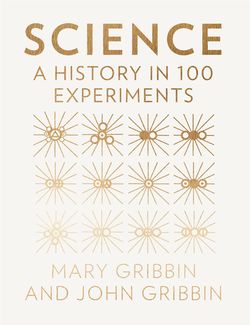Читать книгу Science: A History in 100 Experiments - John Gribbin - Страница 22
Оглавление| No. 17 | BREATHING PLANTS AND PURE AIR |
In the early 1770s, Joseph Priestley, who was a non-conformist minister, philosopher and scientist, carried out some experiments that hinted at the importance of plants in making air fit to breathe. In 1771, while a minister in Leeds, he put some mint in a pot in a closed container glass with a lit candle. The candle soon went out, but the mint thrived and continued to grow. Twenty-seven days later, without having ever opened the container, he re-lit the candle by focusing sunlight through the glass of the container using a curved mirror. This showed him that the mint had somehow revived the air in the closed container. The following year, he carried out similar experiments with mice. First, he kept a mouse in a similar enclosed container with no plants, and noted how long it took before the mouse collapsed. Then, he repeated the experiment with living plants in the container with the mouse. This time, the mouse survived. Priestley realized that this meant that living plants provided something to the air that animals need in order to live, and that candles need in order to burn. At this time, however, he had no idea what the ‘something’ was.
In 1774, Priestley left Leeds and was sponsored by Lord Shelburne, who provided him with a base on Shelburne’s estate in Calne, Wiltshire. Continuing his experiments there, he studied the gas released by what was then known as the red calx of mercury (now called mercuric oxide) when it was heated by focusing the rays of the Sun on it. He trapped the gas as it was given off, leaving mercury behind, and carried out a long series of experiments with it. He found that a lighted candle put into the gas flared up brightly, and that a glowing taper would re-light if plunged into a tube of this ‘pure air’, as he called it.
In 1775, he did another mouse experiment. He put a full grown mouse in a container filled with ordinary air, and found that it could survive for only 15 minutes. But when he put a similar mouse in the same container filled with ‘pure air’, it survived for half an hour, and then, when he took the seemingly dead mouse out of the container and warmed it by the fire, it revived. News of these experiments was quickly spread via the Royal Society. Priestley had discovered oxygen, although it would not be given that name until later. A Swedish chemist, Carl Scheele, made the discovery at about the same time, but his results were not published until 1777.
© Science Photo Library
Engraving of the laboratory of the English chemist, Joseph Priestley (1733–1804).
In 1779, a Dutch physician and chemist, Jan Ingenhousz, settled in England after travelling widely in Europe. By then, Priestley had moved on, and Ingenhousz took over his laboratory in Calne, under the same sponsorship. Ingenhousz was also interested in the way air could be ‘revived’ by plants, and had independently carried out experiments similar to those Priestley had carried out at the beginning of the 1770s. At Calne, he took this work a stage further by putting green plants under water in transparent containers. He observed that bubbles of gas were produced from the underside of the green leaves when they were exposed to sunlight, but that in the absence of sunlight this bubbling stopped.
It was a simple matter to catch the gas produced by the plants and test it. Ingenhousz found that a glowing taper plunged into the gas would relight, and this and other tests showed that it must be Priestley’s ‘pure air’ – what we now call oxygen. As a result of these experiments, Ingenhousz is credited with discovering photosynthesis, the chemical process by which plants use energy from sunlight and (among other things) carbon dioxide from the air to build their tissues, with oxygen released as a by-product. Animals use oxygen from the air to power their cells, releasing carbon dioxide as a waste product, so that there is a mutual interdependence between plants and animals. Although these details were worked out only later, the broad picture was clear to Ingenhousz in 1779.
© Biophoto Associates/Science Photo Library
Photosynthesis in Canadian pondweed (Elodea canadensis). The bubbles around the plant contain oxygen, a by-product of photosynthesis. Photosynthesis is the process by which most plants convert sunlight into chemical energy.
Ingenhousz summed up his discoveries in a book, Experiments upon Vegetables – Discovering Their Great Power of Purifying the Common Air in the Sunshine and of Injuring it in the Shade and at Night. He was fascinated by the interdependence between plants and animals, and at the end of the book he wrote: ‘If these conjectures were well grounded, it would throw a great deal of new light upon the arrangement of the different parts of the globe and the harmony between all its parts would become more conspicuous.’ This comes close to the idea of Gaia, the Earth as a single living organism, two centuries ahead of its time.
